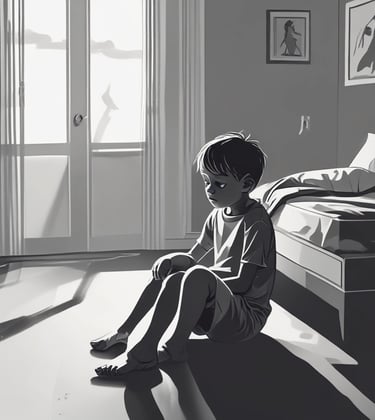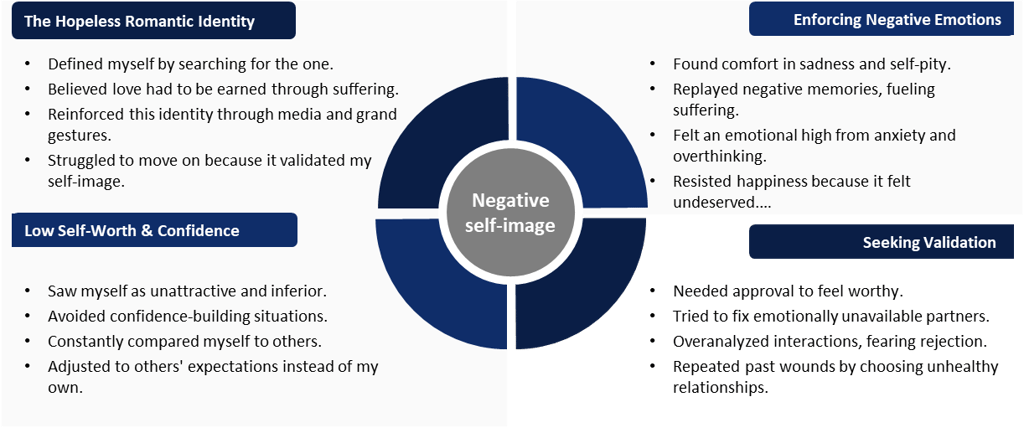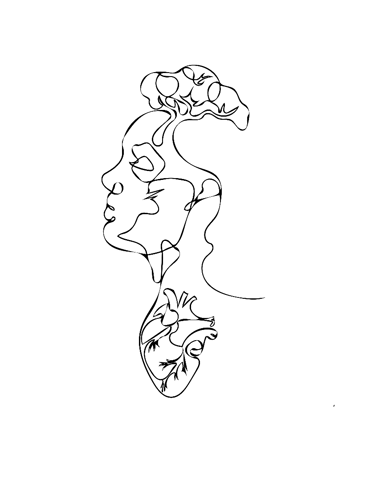Clinging to a Familiar Self – The Shadow Body
For weeks, I had been caught in cycles of negativity, frustrated that I couldn’t break free despite knowing my thoughts were flawed. An intense internal resistance held me back. I despised my sadness and loneliness, yet sometimes, I preferred sinking into them rather than enjoying a simple pleasure like watching a soccer game. I found myself deliberately wallowing in my sorrow, replaying memories of Jana instead of seeking distractions.
"What is known is considered safe, even if it is painful.” — Eckhart Tolle
My realization came when I read about the shadow body in The Power of Now. The idea is simple: humans cling to what is familiar, even if it causes suffering. The brain perceives the unknown as a threat, preferring negative emotions it understands over uncertain change. Staying in pain requires less mental effort than forging a new path.
The mind resists change to preserve a consistent self-image.
Thoughts and emotions reinforce each other, creating habitual cycles.
Familiar suffering feels safer than unfamiliar happiness.
Over time, these patterns hardwire into our personalities. Books like Breaking the Habit of Being Yourself suggest that by the age of 35, 95% of our actions and thoughts occur unconsciously. This explained why I struggled—changing my core identity felt unnatural.
The Struggle with Change
A Coherent Self-Image
When I examined my self-image, I noticed it was surprisingly coherent. I had assigned myself the role of a hopeless romantic—a shy guy who experiences intense emotions, struggles with love, and searches endlessly for the one.
My beliefs and behaviors aligned perfectly with this identity.
I sought validation through grand romantic gestures.
I watched movies, listened to music, and consumed content that reinforced my worldview.
I avoided confidence-building actions because they contradicted my self-image.
Every action I took, from the way I reacted to Jana’s absence to the songs I played post-breakup, strengthened my identity. Even my reluctance to let go of the belief that Jana and I were meant to be stemmed from this need to maintain my self-image. The realization hit me hardest in therapy when my therapist said:
Addicted to Negativity
Understanding my emotional addiction was a crucial breakthrough. Breaking the Habit of Being Yourself explains that emotions, whether triggered by real events or thoughts, produce identical chemical responses in the body. Replaying painful memories recreates suffering, reinforcing negative thought loops.
The brain craves the emotional intensity of stress and suffering.
Overthinking about the past or future amplifies anxiety and insecurity.
The body becomes addicted to familiar emotional states, just like a drug dependency.
This explained why I struggled to let go of my old self. Suppressing negative thoughts felt like withdrawal. My brain resisted, bombarding me with reminders of past failures. My anxiety, once mild, had escalated into a constant, overpowering presence.
Reopening Childhood Wounds
Another puzzle piece fell into place: my attraction to Jana wasn’t random. I had been drawn to her because she triggered old wounds. She was inconsistent—loving one moment, distant the next—mirroring the unpredictable emotional environment of my childhood.
Jana’s emotional distance validated my subconscious belief that love had to be earned.
The emotional rollercoaster provided the adrenaline rush my brain craved.
Her inability to verbalize emotions made me feel needed, reinforcing my role as the fixer.
I had mistaken emotional intensity for love. This pattern explained why I repeatedly fell for similar partners and why stable, healthy relationships felt boring. The inconsistencies of my past had defined my expectations of love.
“Of course you can’t move on—you still believe she’s your only possible match.”
The Concept of the Shadow Body




This was a wake-up call. My subconscious had been fiercely resisting change, keeping me locked in a narrative that no longer served me.
“You are not addicted to the substance. You are addicted to the emotional state it creates.” — Dr. Joe Dispenza
“We are attracted to what is familiar, not necessarily what is good for us.”
The Path Forward
Recognizing these subconscious patterns gave me clarity. If my thoughts and actions had reinforced my suffering, I could reverse-engineer the process. My new focus became:
Rewriting my self-image by challenging old beliefs.
Consciously breaking habits that fed my negative identity.
Detoxing from negativity by practicing mindfulness and gratitude.
This transformation wouldn’t happen overnight, but awareness was the first step. For the first time, I wasn’t just passively experiencing my emotions—I was actively reshaping them.
“You can’t heal in the same environment that made you sick.” — Unknown


